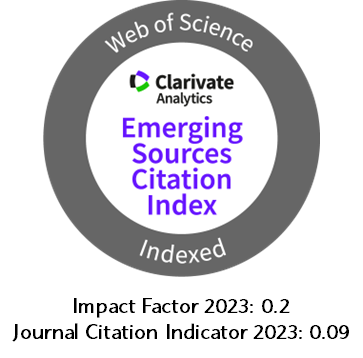Operating parameters of an energy-efficient electroosmotic device for dehydrating wastewater sludge from paper production
DOI:
https://doi.org/10.5377/nexo.v35i02.14639Keywords:
Energy-efficient, Electroosmotic device, Water-mineral-organic waste, Electro-flotation plant for processing paper wasteAbstract
The paper describes the design of an electroosmotic device for treating dehydration of water-mineral-organic wastewater sludge from paper production and a methodology for conducting experimental studies. As for regression equations for the reduction factor of the waste mass, specific indicators were presented: drainage fluid consumption, current strength, power consumption, and energy, depending on the voltage on the electrodes and the duration of treatment. Besides, the required waste treatment function depends on the voltage and the required waste concentration. Equations and graphs were presented. In terms of the intensity of fluid excretion, it was found that the most effective treatment is performed during the first 0.5–0.7 h. At a voltage of about 25 V, the processing time of waste (until the mass of waste is reduced to 1/3) is about 0.75 h, and at a voltage of less than 10 V, it is about 3–5 h. With a decrease in the voltage, the liquid withdrawal slows down faster. By the magnitude of the current, the separation process lasts for the first 0.7–1.0 h. By the nature of the change in the current, the process is homogeneous (differing only in intensity) at a voltage of more than 8 V. At a lower voltage, the intensity of waste separation by current strength and an increase in the duration of processing decreases sharply. The power consumption is actively growing in the first 1–2 h of processing, gradually slowing down. Then we found the proportionality of power to the applied voltage. The increase in power was associated with a decrease in the distance between the electrodes. With a decrease in the mass of waste less than 50% of the initial value, energy is less efficiently used for separating waste, and the observed increase in energy consumption during further processing sharply increases energy consumption. To reduce the final mass of waste and obtain their concentrate, it was necessary to increase energy consumption. Waste processing should be stopped when 1/3 of the initial waste mass remains due to the actual cessation of the separation of waste fractions with an active increase in energy consumption.
Downloads
442
Downloads
Published
How to Cite
Issue
Section
License
Copyright (c) 2022 Universidad Nacional de Ingeniería

This work is licensed under a Creative Commons Attribution 4.0 International License.
The authors who publish in Nexo Scientific Journal agree to the following terms:
- Authors retain the copyright and grant the journal the right of the first publication under the license Creative Commons Attribution License, which allows others to share the work with a recognition of the authorship of the work and the initial publication in Nexo Scientific Journal.
- Authors may separately establish additional agreements for the non-exclusive distribution of the version of the work published in the journal (for example, in an institutional repository or a book), with the recognition of the initial publication in Nexo Scientific Journal.
- Authors are allowed and encouraged to disseminate their works electronically (for example, in institutional repositories or in their own website) before and during the submission process, as it can lead to productive exchanges, as well as earlier and greater citation of published works.











